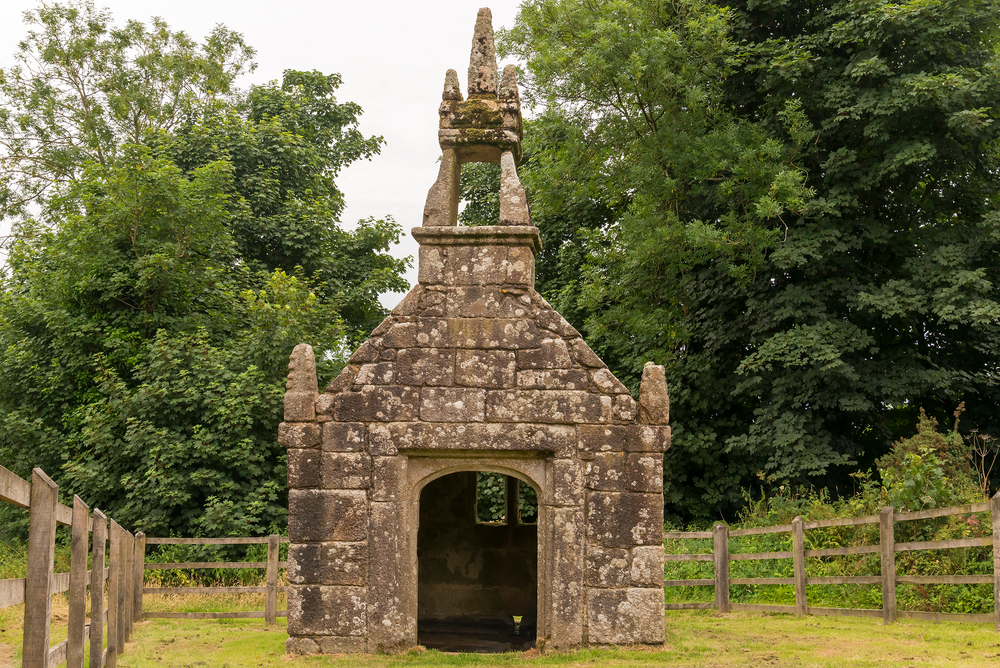Dupath Well near the town of Callington is said to be the largest and the most impressive well house in Cornwall. Hidden behind some old barns on an ancient farmstead this sacred place was once a site of pilgrimage.
The elegant little building was constructed by the Augustinian monks of the nearby St Germans Priory in around 1510 at the spot where a venerated natural spring rises from the ground. This water flows across the threshold of the well house and into a large basin inside which is thought to be the remains of an immersion pool once used by health-seekers and pilgrims. A dip in these waters was said to cure all kinds of ills, including whooping cough.
However perhaps this holy well is best known for the tragically romantic tale that is attached to the site.
Romantic Tragedy
Legend has it that a duel was fought here between two noble men. One of the men was a poor knight called Sir Colan while the other a rich man named Gottlieb. The battle was predictably fought over the affections of a fair maiden. History has not recorded this lady’s name but it is said that the beautiful woman favoured Colan, who she had known since childhood.
Sadly however this is a story with a tragic end, neither man was to win her hand because both warriors died trying. Gottlieb was killed during the duel and Colan is said to have died soon after from his wounds.
Various versions of this romantic tale have been passed down in local folklore and the names and the outcome of the story often differs slightly. But it is usually agreed that it was the victorious knight, Colan, who paid to have a well built as an act of atonement for his sins!
By the mid-19th century the beautiful well house had fallen into disrepair, the antiquarian John Thomas Blight reported its “deserted and neglected appearance” in the 1850s. In the 1890s the little building was said to be overrun with ivy and had grass growing out of its roof. Fortunately local vicar, Rev H. M. Price managed to raise enough money to have the building restored and these days it is cared for by the Cornwall Heritage Trust.
It is a wonderfully secluded and timeless place to visit. Offerings have been left on this site for hundreds of years and you will find that that tradition still continues today. Step inside the cool, dark building on a summer’s day and the light from the narrow windows will flash off the coins that litter the bottom of this sacred pool.
